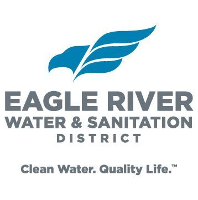India – World Bank Group

Global Development Initiatives and Sustainable Development Goal (SDG) Alignment
1.0 Executive Summary
This report provides a comprehensive overview of recent development activities across a diverse portfolio of over 100 nations in Africa, Asia, Europe, Latin America, and the Pacific. The analysis focuses on the strategic alignment of these initiatives with the United Nations’ 2030 Agenda for Sustainable Development. The findings indicate a concerted effort to address interconnected development challenges, with significant investments directed towards achieving key SDG targets related to poverty, health, education, and climate action.
Analysis of Development Efforts Across Key SDG Pillars
2.1 Pillar 1: Economic Prosperity and Poverty Eradication
Initiatives aimed at fostering economic growth and eradicating poverty are central to development strategies in the subject countries. These efforts directly support SDG 1 (No Poverty) and SDG 8 (Decent Work and Economic Growth).
- Micro, Small, and Medium Enterprise (MSME) Support: Programs providing access to finance and technical assistance to boost entrepreneurship and job creation.
- Infrastructure Development: Investments in transport, energy, and digital infrastructure to enhance connectivity and reduce the cost of doing business.
- Agricultural Modernization: Projects focused on improving crop yields, building climate-resilient farming practices, and strengthening value chains to increase rural incomes.
- Social Protection Systems: Implementation of cash transfer programs and social safety nets to protect the most vulnerable populations from economic shocks.
2.2 Pillar 2: Social Equity and Human Well-being
A significant portion of development financing is allocated to improving social outcomes, directly contributing to SDG 3 (Good Health and Well-being), SDG 4 (Quality Education), SDG 5 (Gender Equality), and SDG 10 (Reduced Inequalities).
- Health System Strengthening: Investments to improve primary healthcare services, increase vaccination coverage, and enhance pandemic preparedness and response capabilities.
- Educational Access and Quality: Initiatives to increase school enrollment, particularly for girls, improve teacher training, and integrate digital learning technologies.
- Gender Equality Programs: Projects designed to increase women’s economic empowerment, combat gender-based violence, and promote female leadership in public and private sectors.
- Inclusive Services: Efforts to ensure that marginalized groups, including persons with disabilities and remote communities, have equitable access to essential public services.
2.3 Pillar 3: Environmental Sustainability and Climate Action
Addressing climate change and environmental degradation is a growing priority, with projects targeting a wide range of environmental SDGs, including SDG 6 (Clean Water and Sanitation), SDG 7 (Affordable and Clean Energy), SDG 11 (Sustainable Cities and Communities), and SDG 13 (Climate Action).
- Renewable Energy Transition: Financing for solar, wind, and geothermal power projects to reduce reliance on fossil fuels and expand energy access.
- Water Resource Management: Programs to improve access to safe drinking water and sanitation, and to implement sustainable water management systems for agriculture and industry.
- Climate Resilience and Adaptation: Projects focused on building resilient infrastructure, developing early-warning systems for extreme weather events, and promoting climate-smart agriculture.
- Sustainable Urban Development: Support for cities to improve waste management, develop green public spaces, and create sustainable transport systems.
Strategic Outlook and Future Directions
3.1 Recommendations for Enhanced SDG Impact
To accelerate progress towards the 2030 Agenda, future development strategies should prioritize the following actions:
- Strengthen Data Systems: Enhance national capacities for data collection and analysis to better monitor SDG progress and inform evidence-based policymaking.
- Leverage Private Sector Finance: Create enabling environments and innovative financing mechanisms to mobilize private capital for SDG-aligned investments.
- Foster Integrated Solutions: Design and implement projects that address multiple SDGs simultaneously, recognizing the interconnected nature of development challenges.
- Deepen Global Partnerships: Reinforce international cooperation, as outlined in SDG 17 (Partnerships for the Goals), to share knowledge, technology, and financial resources effectively.
1. Which SDGs are addressed or connected to the issues highlighted in the article?
Analysis of SDGs in the Article
The provided article does not contain any narrative or descriptive text that discusses specific issues related to the Sustainable Development Goals (SDGs). The content consists of a technical search query string, which lists numerous countries. While these countries are the focus of the SDGs, the article itself does not mention any specific development challenges, projects, or outcomes such as poverty, hunger, education, or climate change. Therefore, it is not possible to identify any specific SDGs that are addressed or connected to the content of the article.
2. What specific targets under those SDGs can be identified based on the article’s content?
Identification of SDG Targets
As no specific SDGs can be identified from the article’s content, it is consequently impossible to identify any corresponding SDG targets. The article lacks any discussion of policies, programs, or goals related to sustainable development, which would be necessary to link the text to specific targets like reducing poverty rates, ensuring quality education, or promoting clean energy.
3. Are there any indicators mentioned or implied in the article that can be used to measure progress towards the identified targets?
Identification of SDG Indicators
The article does not mention or imply any indicators for measuring progress towards SDG targets. The text is a configuration for a data query and does not include any statistics, data points, or metrics (e.g., percentage of the population below the poverty line, literacy rates, carbon emission levels) that could function as indicators.
4. Table of SDGs, Targets, and Indicators
| SDGs | Targets | Indicators |
|---|---|---|
| No specific SDGs could be identified from the article’s content. | No specific targets could be identified from the article’s content. | No specific indicators could be identified from the article’s content. |
Source: worldbank.org
What is Your Reaction?
 Like
0
Like
0
 Dislike
0
Dislike
0
 Love
0
Love
0
 Funny
0
Funny
0
 Angry
0
Angry
0
 Sad
0
Sad
0
 Wow
0
Wow
0




















































.jpg.webp?itok=0ZsAnae9#)

























